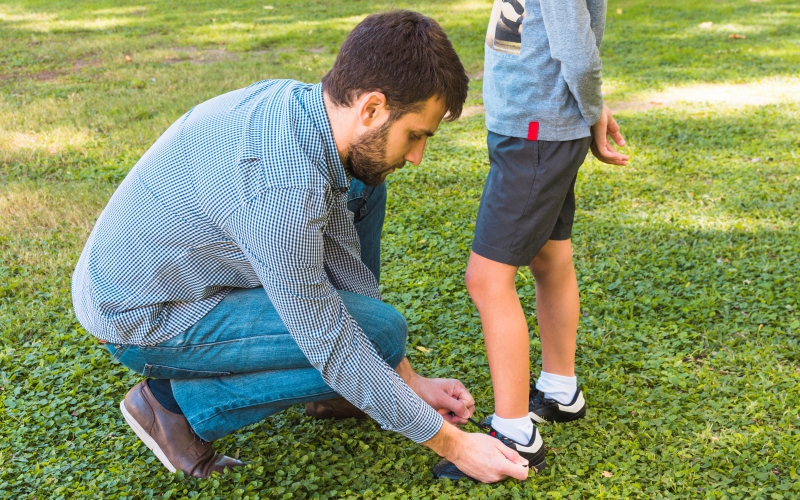Author: Dr.Amit Gupta MBBS, MD, KGMC, PGPN
Consultant: Paediatrician & Neonatologist Motherhood Hospital, Noida
As parents, we play a crucial role in shaping our children’s growth and development. The early years of a child’s life are particularly important, as they lay the foundation for future learning and success. While formal education is vital, the learning that takes place at home is equally significant. In this blog, Dr. Amit Gupta, a renowned Pediatrician and Neonatologist, shares valuable insights on how parents can actively encourage their child’s development and learning within the comfort of their own homes.
Create a Stimulating Environment:
A conducive learning environment at home can greatly enhance a child’s cognitive and emotional development. Dr. Gupta emphasizes the importance of providing age-appropriate toys, books, and games that engage your child’s curiosity and imagination. Consider setting up a dedicated play area where your child can explore and learn through hands-on activities.
Foster a Love for Reading
Reading is an excellent way to promote language development, enhance vocabulary, and spark a love for learning. Dr. Gupta advises parents to create a regular reading routine, incorporating storybooks, picture books, and interactive reading sessions. Encourage your child to ask questions, discuss the story, and explore new concepts through books.
Encourage Imaginative Play
Imaginative play is a powerful tool for fostering creativity and cognitive development. Dr. Gupta suggests providing open-ended toys like blocks, dolls, or art supplies that allow your child to express their imagination freely. Join in their play occasionally, fostering a sense of connection and promoting social skills.
Engage in Meaningful Conversations

Effective communication skills are crucial for a child’s overall development. Dr. Gupta recommends engaging in meaningful conversations with your child, actively listening to their thoughts and ideas. Encourage them to express themselves, ask questions, and share their daily experiences. This not only enhances their language skills but also nurtures their self-confidence and self-expression.
Incorporate Learning into Daily Activities
Transform everyday activities into valuable learning opportunities. Dr. Gupta suggests involving your child in age-appropriate household tasks, such as sorting laundry, counting items, or helping with meal preparation. This allows them to develop fine motor skills, learn about sequencing and organization, and feel a sense of accomplishment.
Limit Screen Time
In today’s digital age, it’s crucial to strike a balance between screen time and other activities. Dr. Gupta advises parents to set reasonable limits on screen time and prioritize activities that promote physical, social, and cognitive development. Encourage outdoor play, family interactions, and imaginative play as alternatives to excessive screen time.
Support Exploratory Play and Experiments
Dr. Gupta highlights the importance of allowing children to explore and experiment in a safe and supervised environment. Provide opportunities for sensory play, such as sand, water, or playdough, which stimulate their senses and encourage scientific thinking. Engage in simple science experiments that introduce basic concepts and ignite their curiosity.
Emphasize the Power of Play
Play is the foundation of a child’s learning journey. Dr. Gupta stresses the significance of unstructured playtime, where children can freely explore and follow their interests. Avoid excessive academic pressure during early childhood and let their natural curiosity guide their learning experiences.
Conclusion
As parents, we hold the key to unlocking our children’s potential. By creating a nurturing and stimulating environment at home, we can actively encourage their development and love for learning. Dr. Amit Gupta advises incorporating a balance of play, reading, conversations, and meaningful activities into their daily routine. Remember, every child is unique, so observe their interests and strengths, and tailor your approach accordingly. Together, let’s embark on a wonderful journey of learning and growth with our children.
At Motherhood Hospitals, we have a team of experienced super specialists backed by the latest in infrastructure and facilities. We have the best Paediatricians in Noida that consists of a team of paediatric specialists that cater to all the needs of children, across age groups, and provide the best care for your child’s development.
Do take an appointment with the best child care hospital in Noida at a centre closest to you. Meet with our doctors who will carry out the required investigations, diagnose the issue and recommend the most appropriate treatment, enabling you to lead an active life.
If you wish to get in touch with Dr. Amit Gupta, please book your appointment here.


 Toll Free Number
Toll Free Number



















